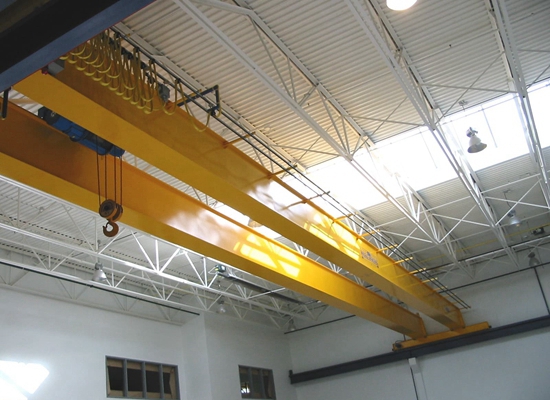The safe operation of a 15-ton overhead crane requires constant vigilance on the part of both the crane operator and the owner of the equipment. Below are some essential safety tips for operating one of these cranes. Use these tips every time you turn on the crane to help prevent accidents.

1.Crane inspections.
There are two different types of crane inspections that should be conducted on a regular basis. The first type is a daily inspection. With this inspection, the crane operator should examine the crane, looking for signs of wear or deterioration. They should be on the lookout for signs of cracking or for any parts that look bent, frayed, or deformed. Weaknesses in chains or ropes or broken or kinked cables are also problems that need to be addressed right away.
More in-depth inspections should also be conducted on a regular basis. Depending on how frequently the crane is used, the time period for these inspections can range anywhere from once a month to once a year. These inspections should go deeper than the daily inspections, taking a look at the inner workings of the crane to make sure that it is functioning the way that it should.
2.Maintenance.
Proper maintenance is essential when it comes to improving the safety of the crane. The maintenance guidelines provided by the manufacturer should be followed to the letter. This includes replacing damaged or worn parts, checking fluid levels, and performing other vital maintenance tasks. The owner’s manual that comes with the crane should provide detailed information about the type of ongoing maintenance that is required.
3.Proper crane operation.
The crane itself should always be operated in a way that is as safe as possible. That means only allowing qualified crane operators to use the crane. Clear communication guidelines should be put in place by the business to ensure that everyone working in the area of the crane is aware of what is happening at all times. The area where the crane is being used should be clearly marked with warning signs or lights. In some cases, it may also be beneficial to use a warning sound like a siren to let nearby workers know that the crane is in motion.
The weight of the load that is being carried should never exceed the weight capacity of the crane. Additionally, workers should never ride on the load while it is being moved. The crane operator needs to lift it high enough in the air that it can clear any obstacles in its path. Anyone working with the crane should also be familiar with hand signals to enable clear communication even in a noisy environment.
The safe operation of a 15-ton overhead crane isn’t something that happens automatically. Instead, it requires careful thought and attention to detail by both the person operating the crane and the owner of the business. By adhering to strict safety standards, the chances of accidents occurring can be significantly lowered, helping to create a safe work environment for employees.